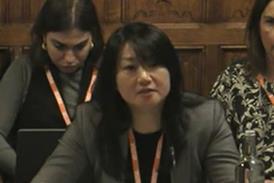HM Revenue & Customs has succeeded in its appeal over how salaried members of a limited liability partnership pay their income tax and national insurance - leaving a hedge fund management company facing a potential tax bill of almost £200m.
The Court of Appeal remitted The Commissioners for HMRC v Bluecrest Capital Management (UK) LLP to the first-tier tribunal (FTT) after finding that individual members of BlueCrest met two conditions for being classed as an employee or salary member for the purposes of income tax and national insurance. Under the Finance Act 2014, a test of a ‘disguised salary’ is whether a member has significant influence over the affairs of the partnership.
The case followed a determination by HMRC that all but four members of the Bluecrest LLP enjoyed disguised salaries. The LLP was found to owe around £142m in income tax and approximately £55.3m in national insurance over five tax years.
BlueCrest appealed to the FTT which allowed the appeal in respect of portfolio managers with allocations of $100m or more and the desk heads. It dismissed the appeal in respect of the other portfolio managers and all non-portfolio managers.
Both sides appealed to the Upper Tribunal. HMRC argued that no members had significant influence over BlueCrest’s affairs and were thus employees. The Upper Tribunal held that the FTT made no error of law. HMRC appealed that decision.
Read more:
Giving lead judgment, Sir Launcelot Henderson, with whom Lord Justice Lewison and Lord Justice Arnold agreed, said condition A - which states a member is to perform services for the LLP in their capacity as a member and is to be wholly or substantially rewarded through a ’disguised salary’ not linked to profits or losses of the LLP - was met in relation to all relevant individual members of the LLP, including the portfolio managers and desk heads.
In relation to condition B - that the member does not have significant influence over the affairs of the partnership - the judge said he would allow HMRC’s appeal. The wording of ’condition B’ for being classed as an employee ’is clear and unambiguous’.
The judge added: ‘If my view of the true construction of Condition B is correct, I can see no escape from the conclusion that both tribunals erred in law in accepting the wider construction which is reflected in HMRC’s published guidance and in the common ground between the parties.
In these circumstances, the judge said, ’I think that the only fair course is to set aside the decision of the Upper Tribunal and remit the case to the FTT so that it can reconsider the evidence in the light of the correct test. This is plainly not a case where we could safely conclude that the error of law was immaterial. On the contrary, it went to the heart of the case.’


























3 Readers' comments